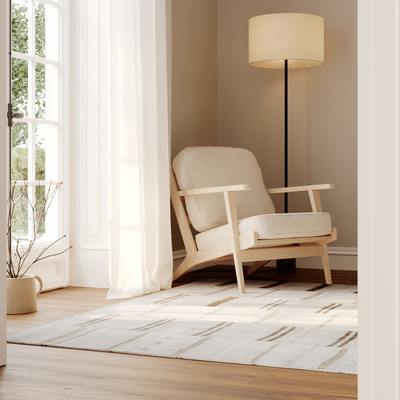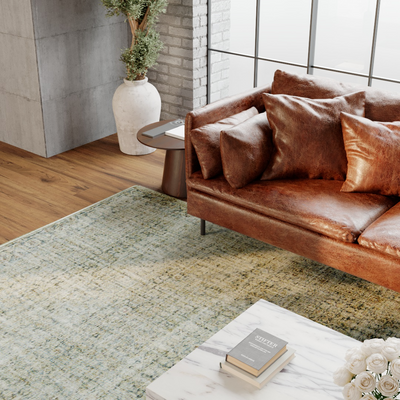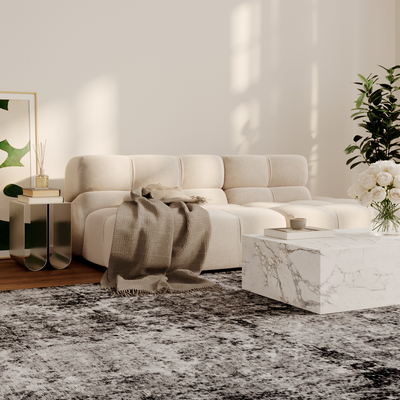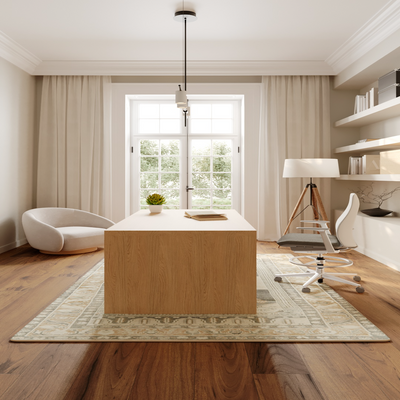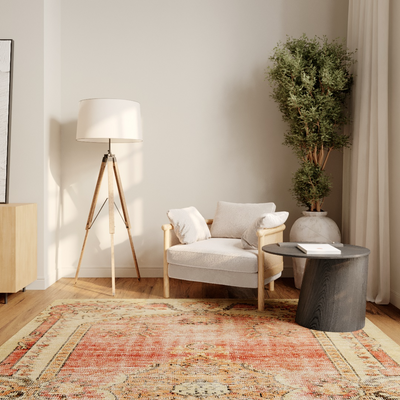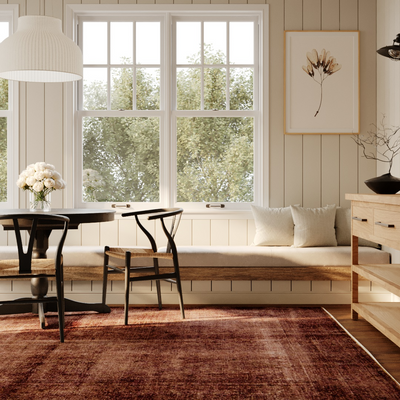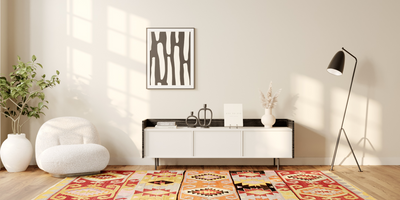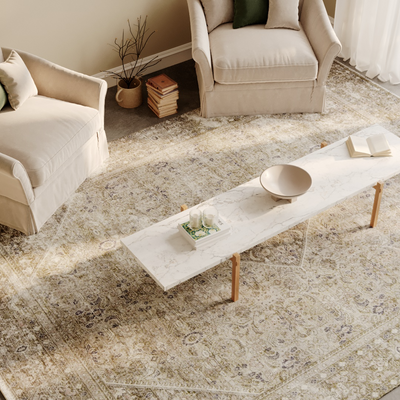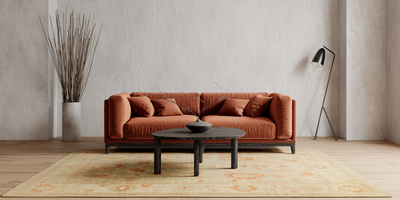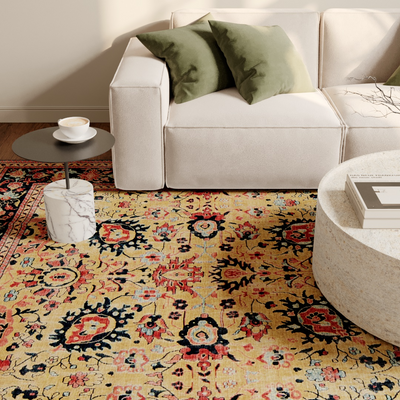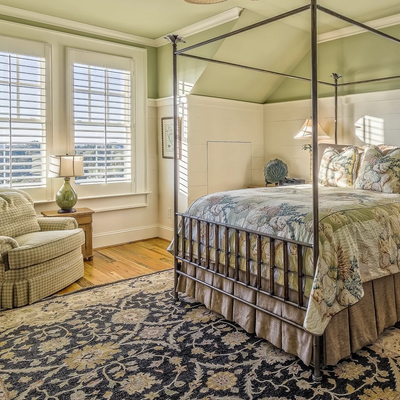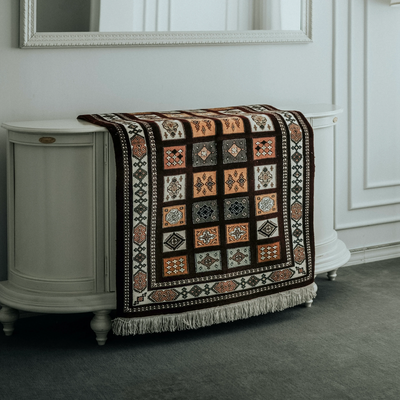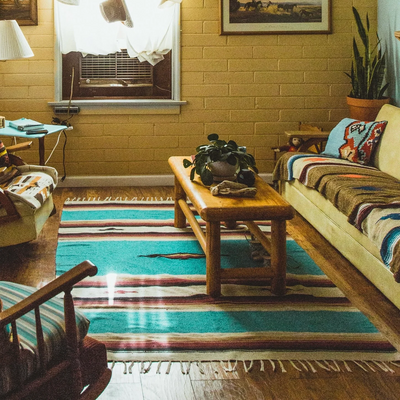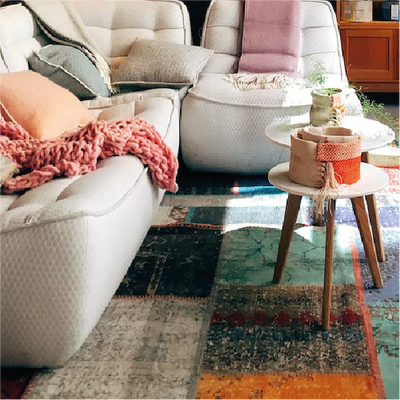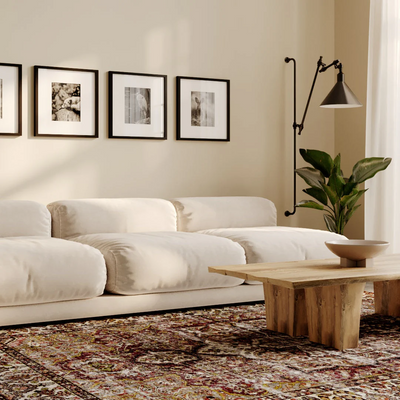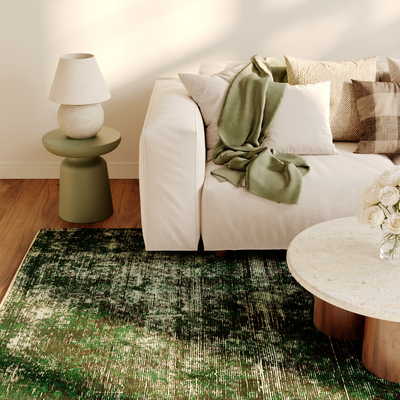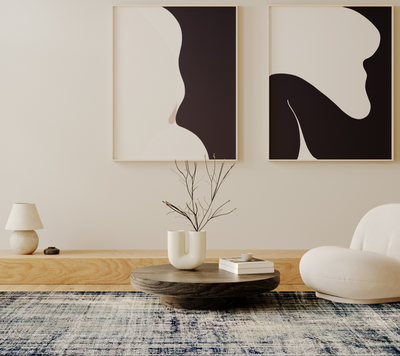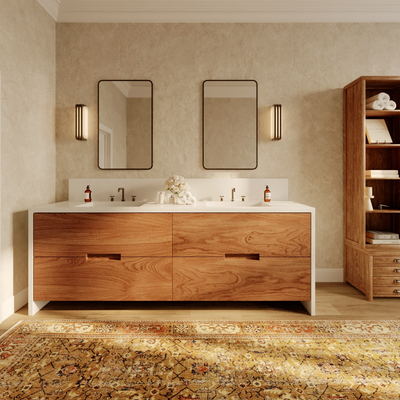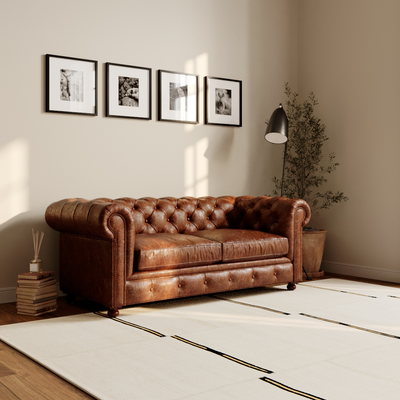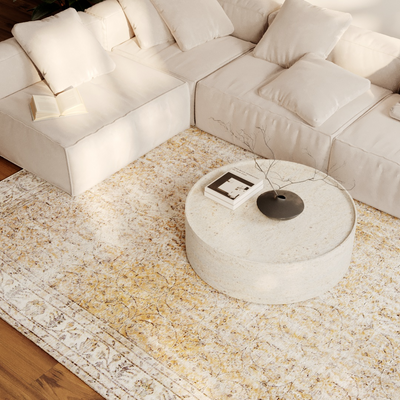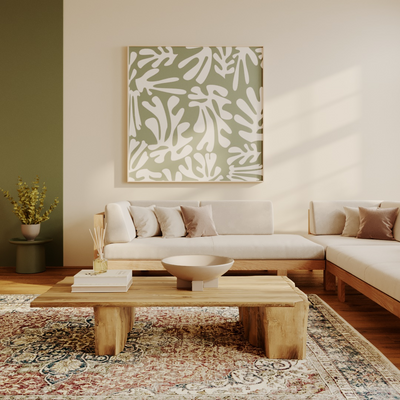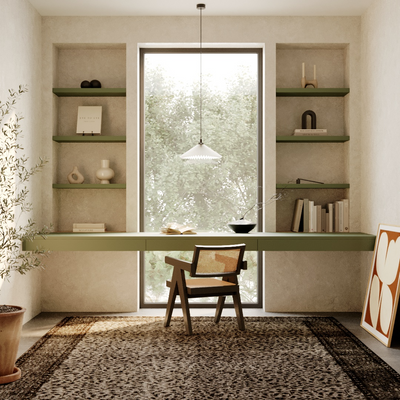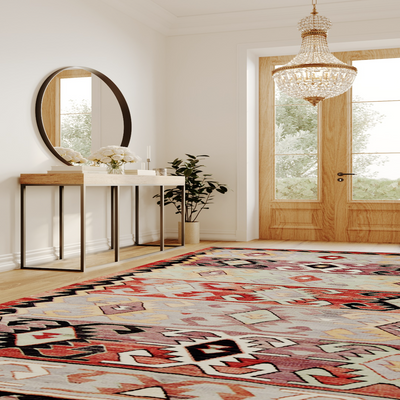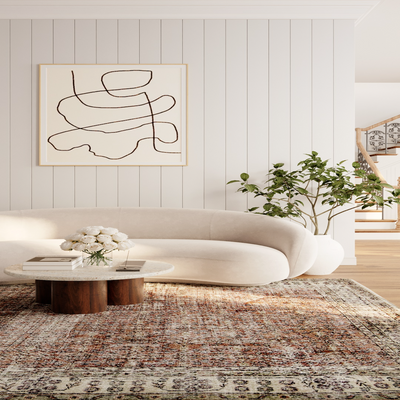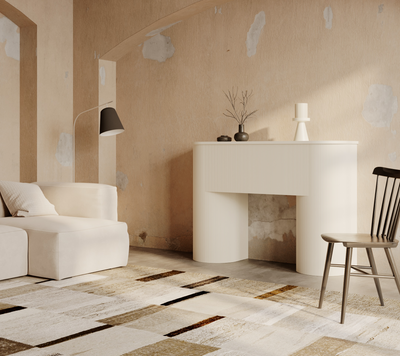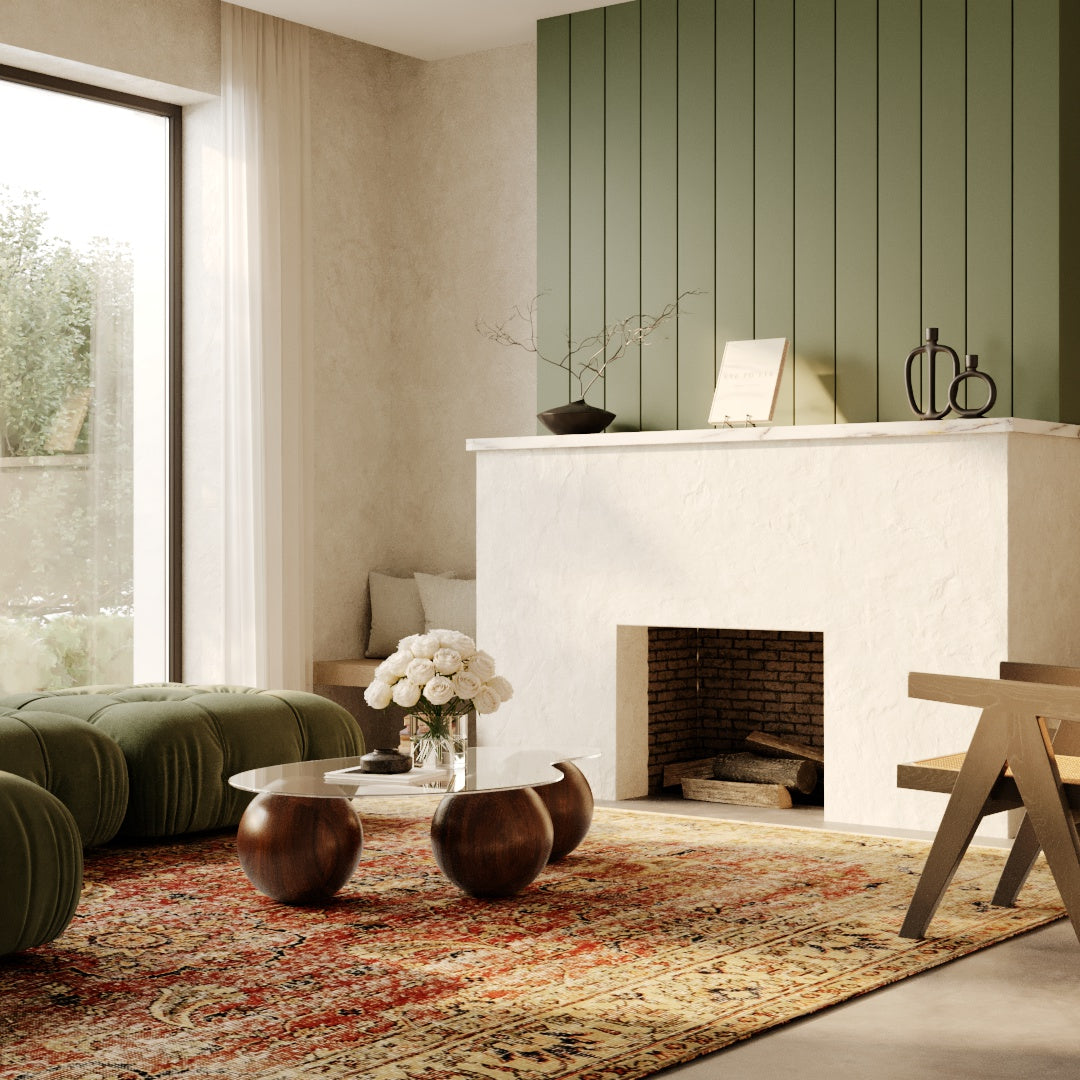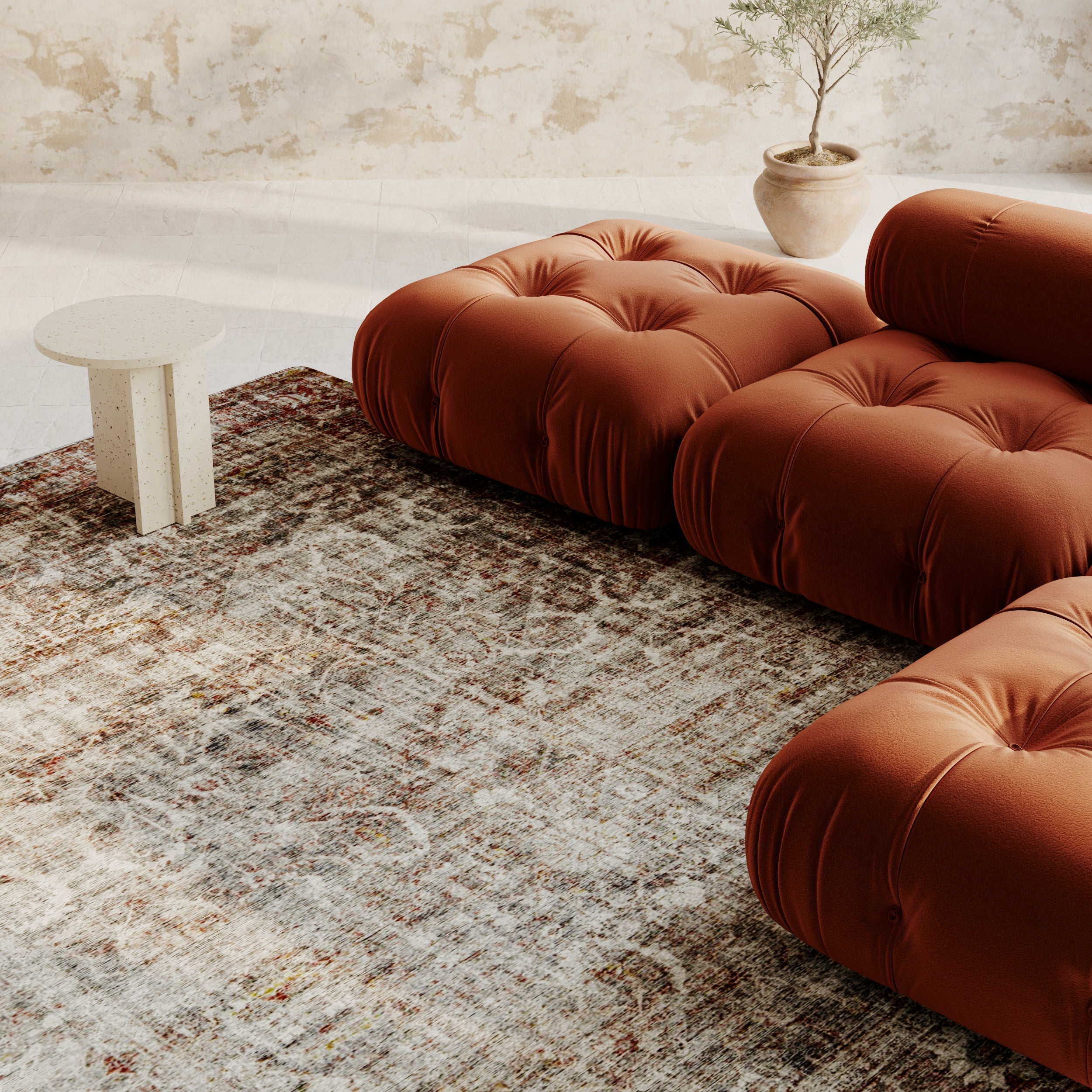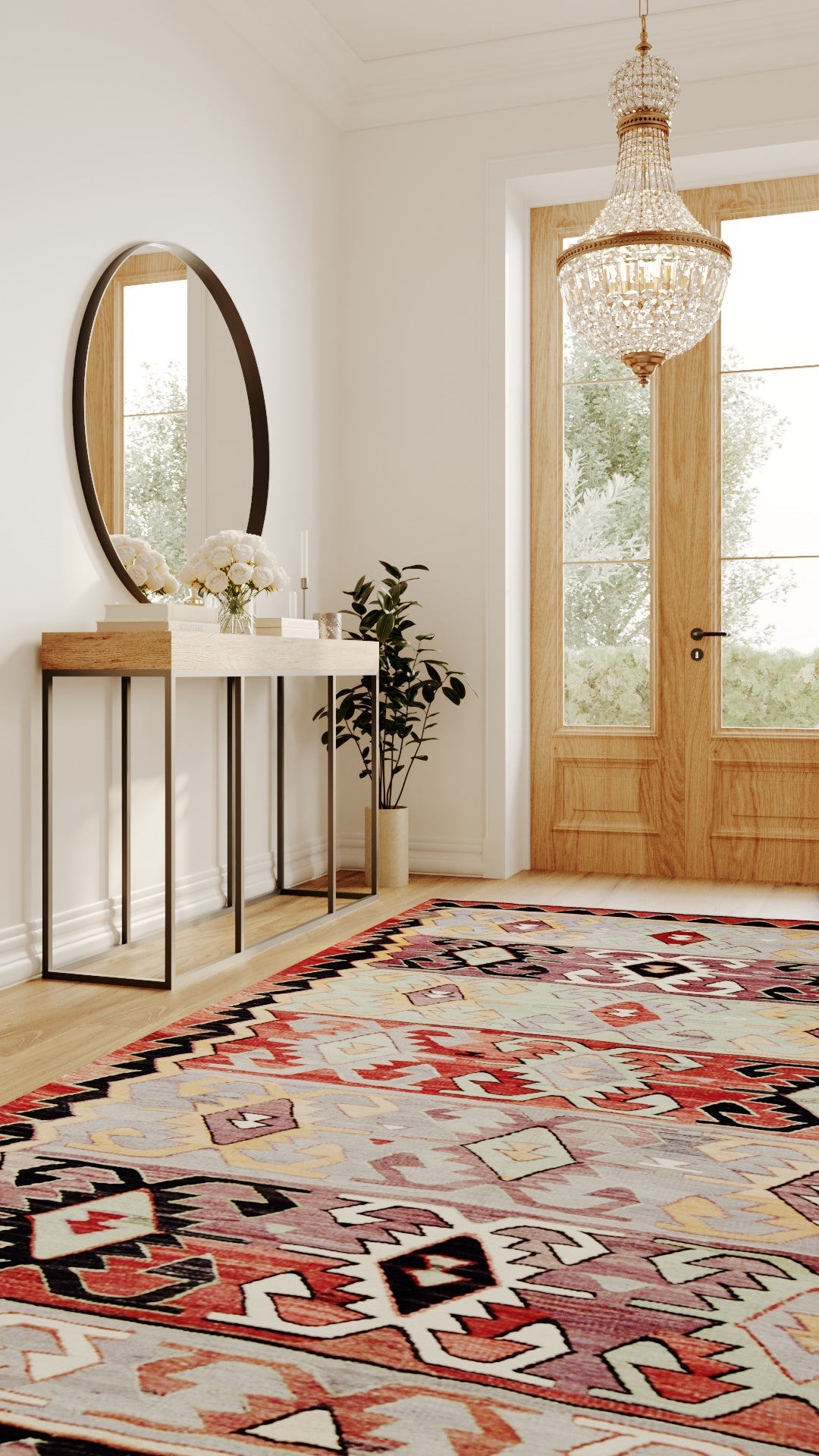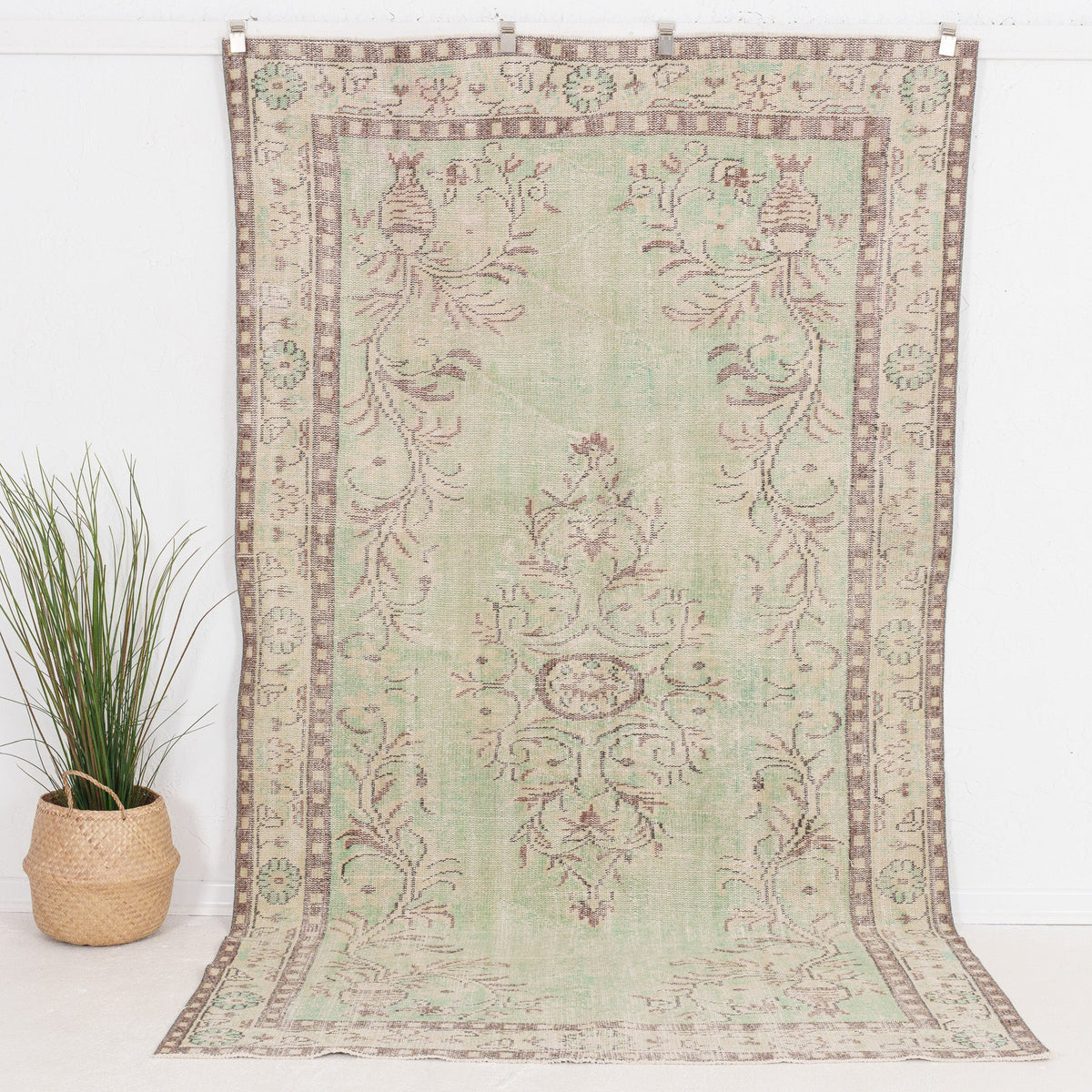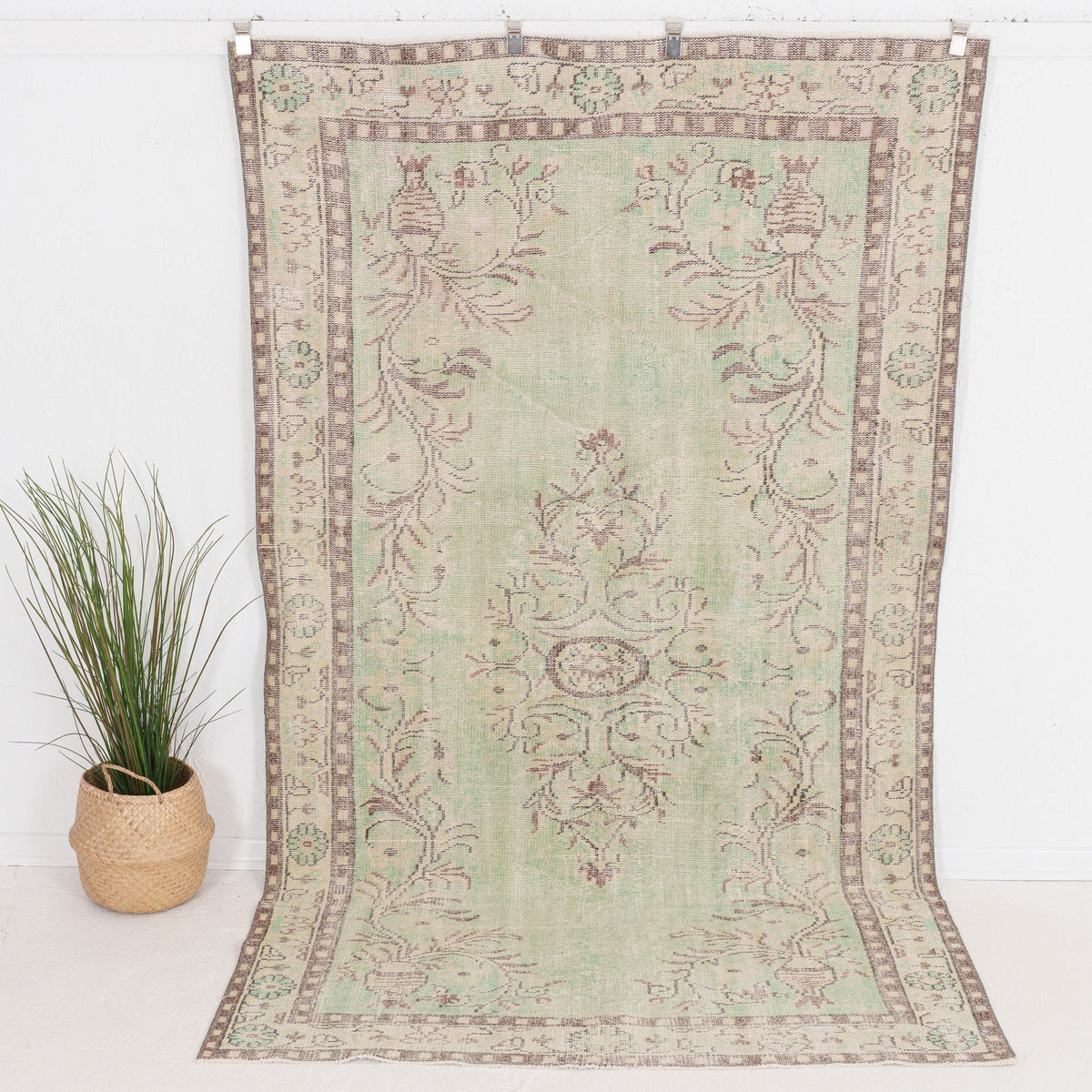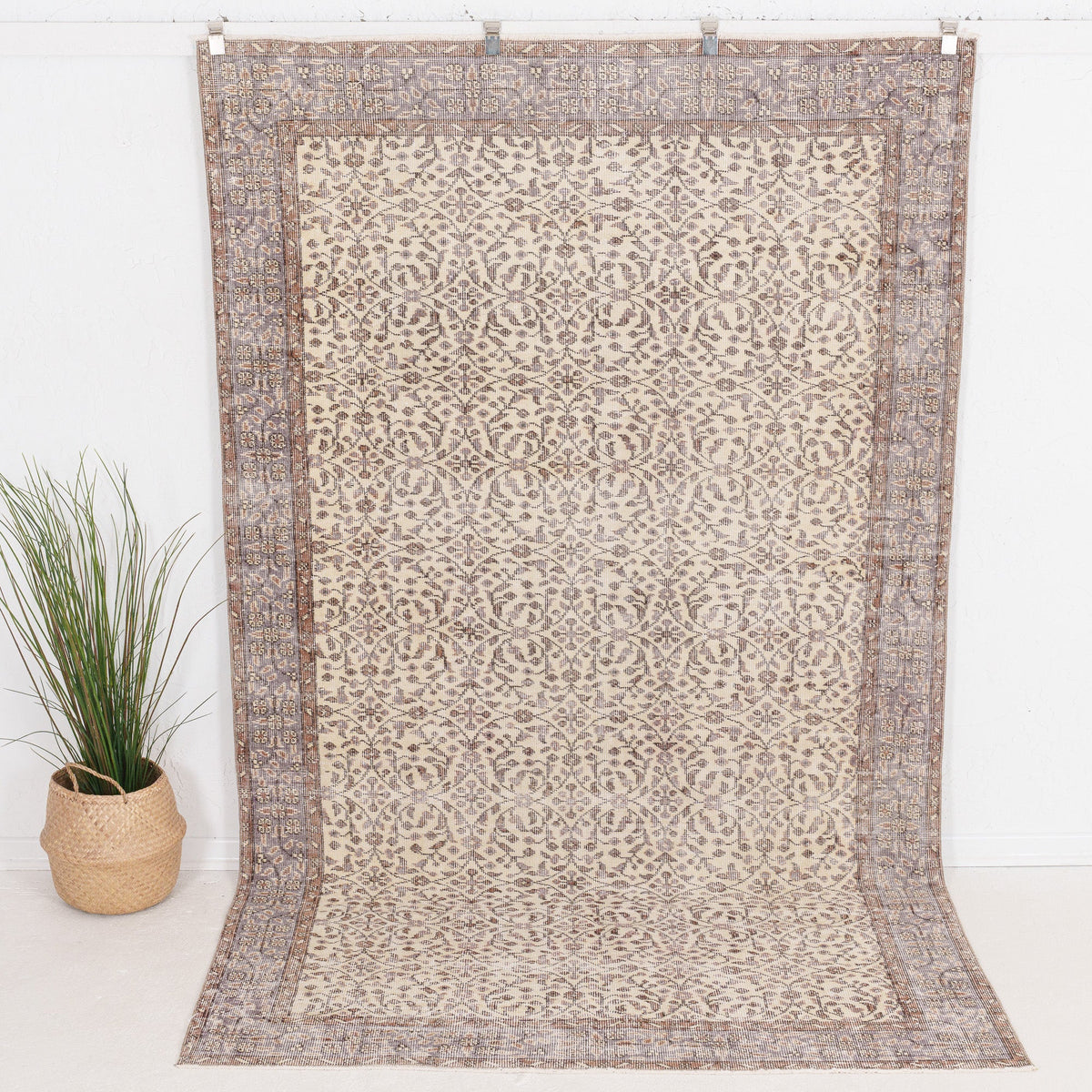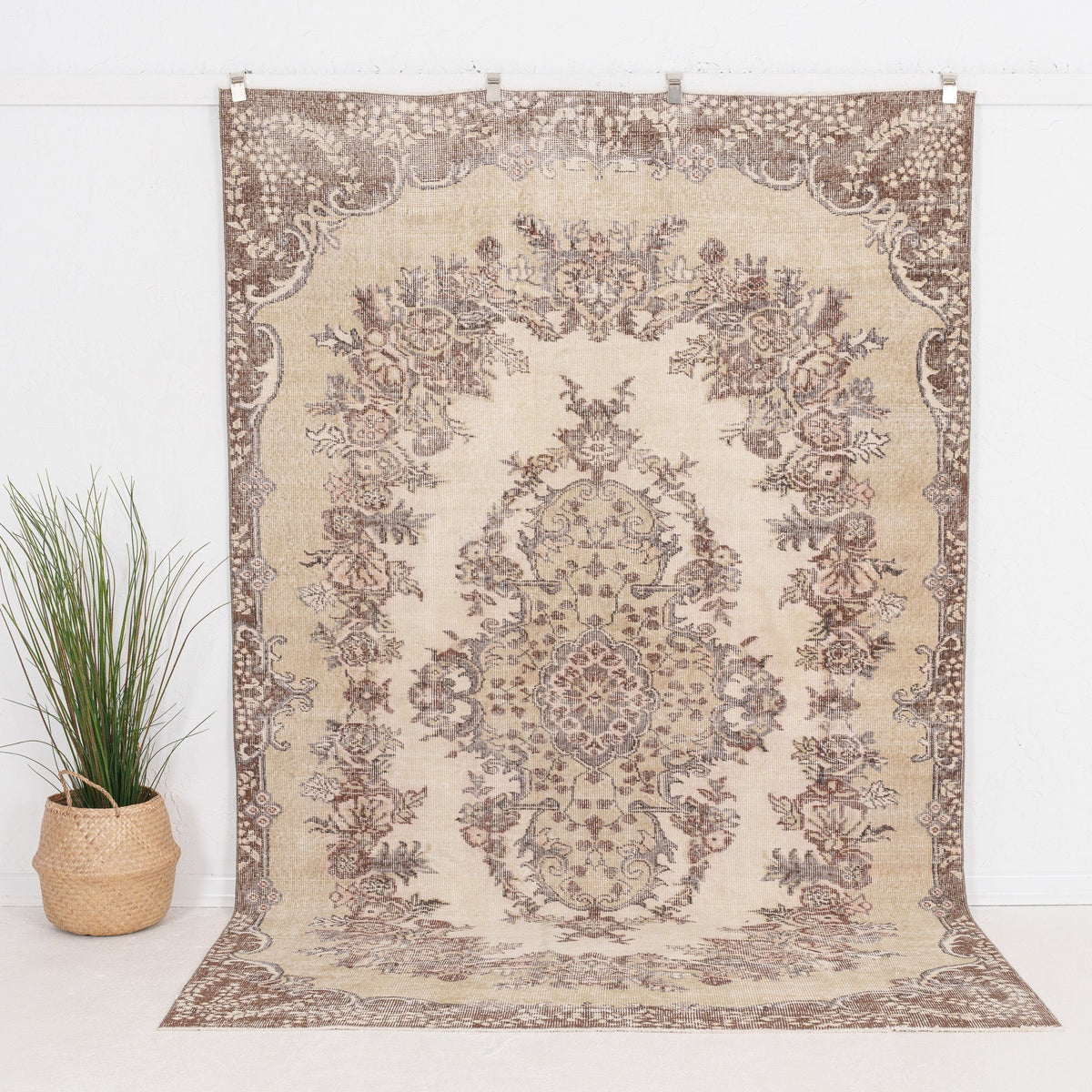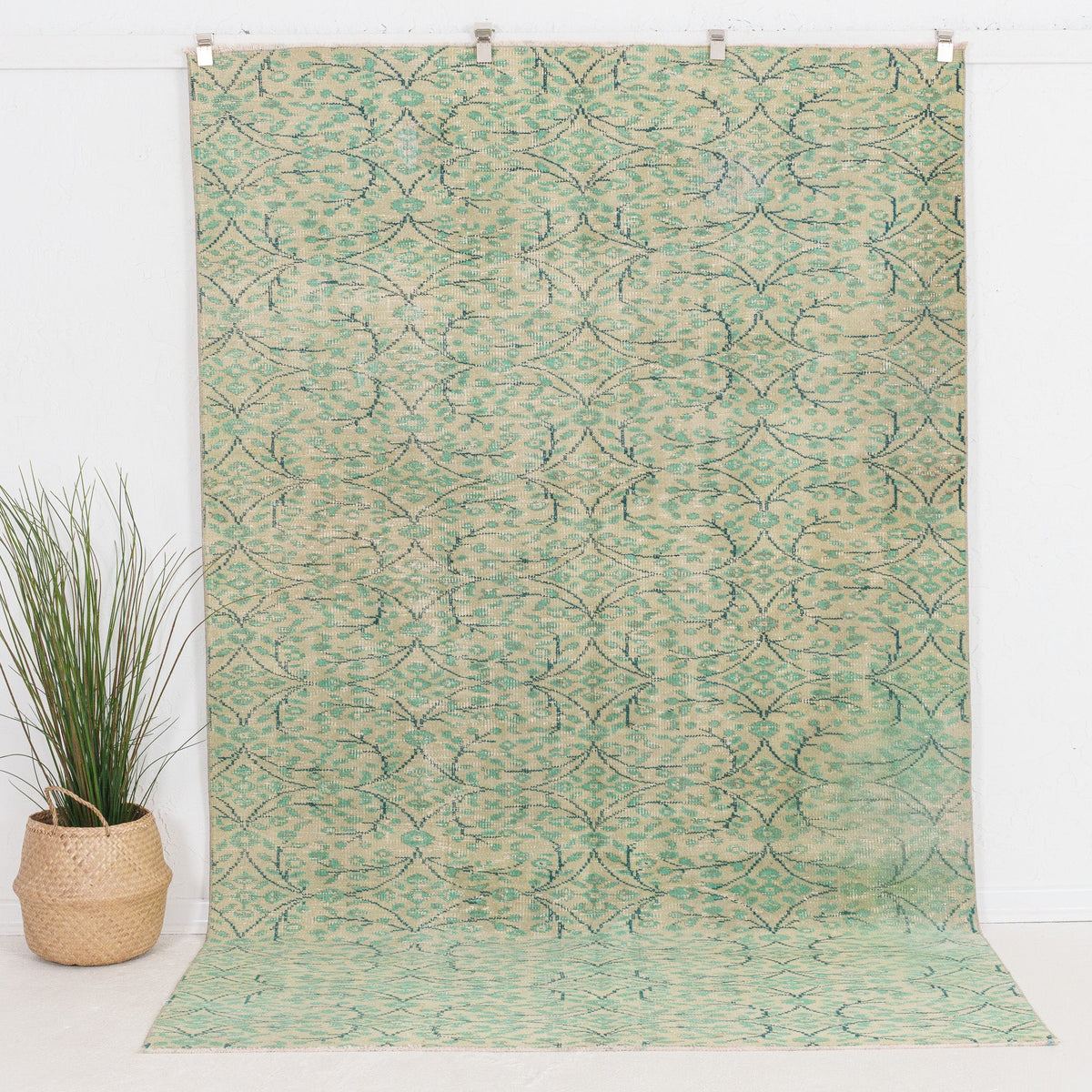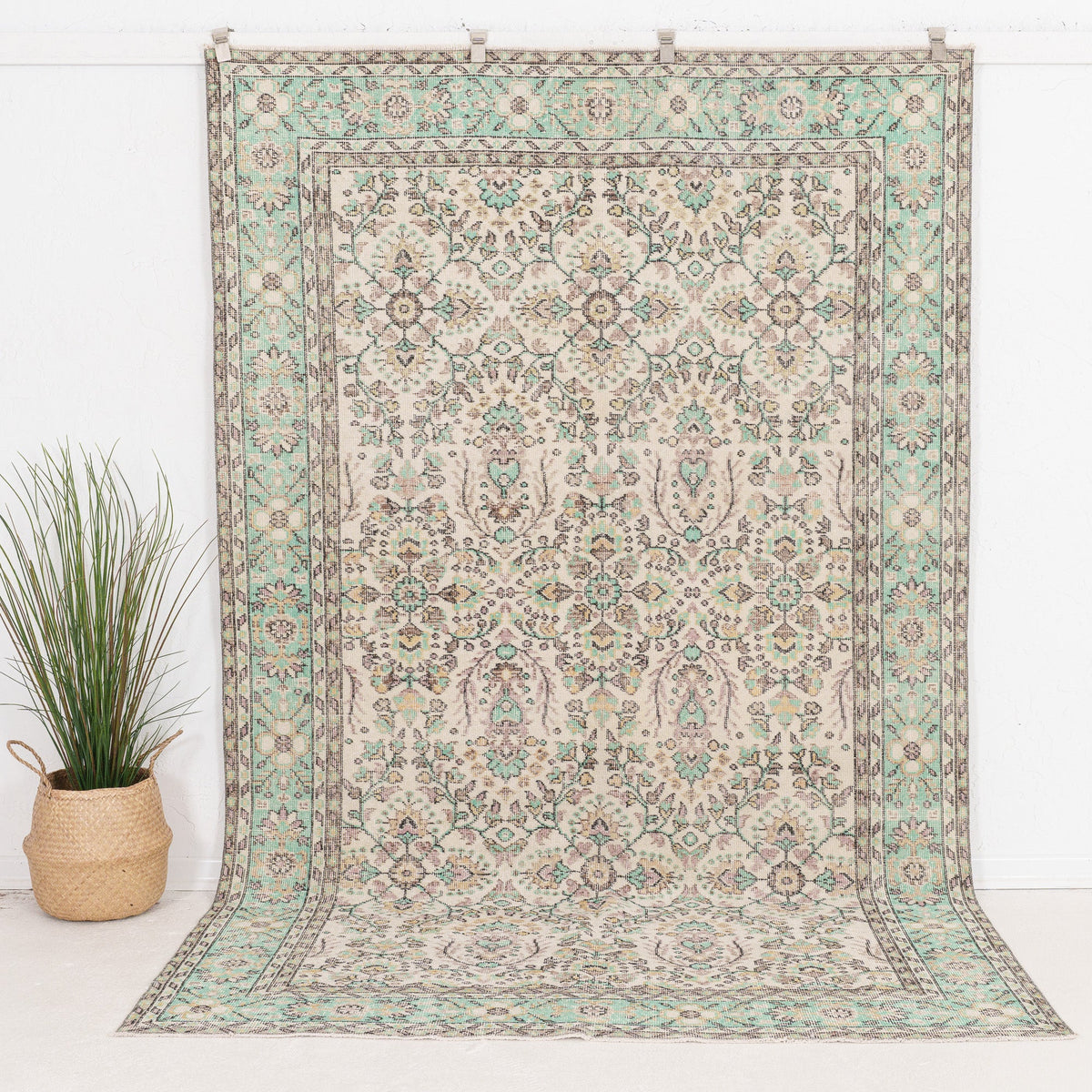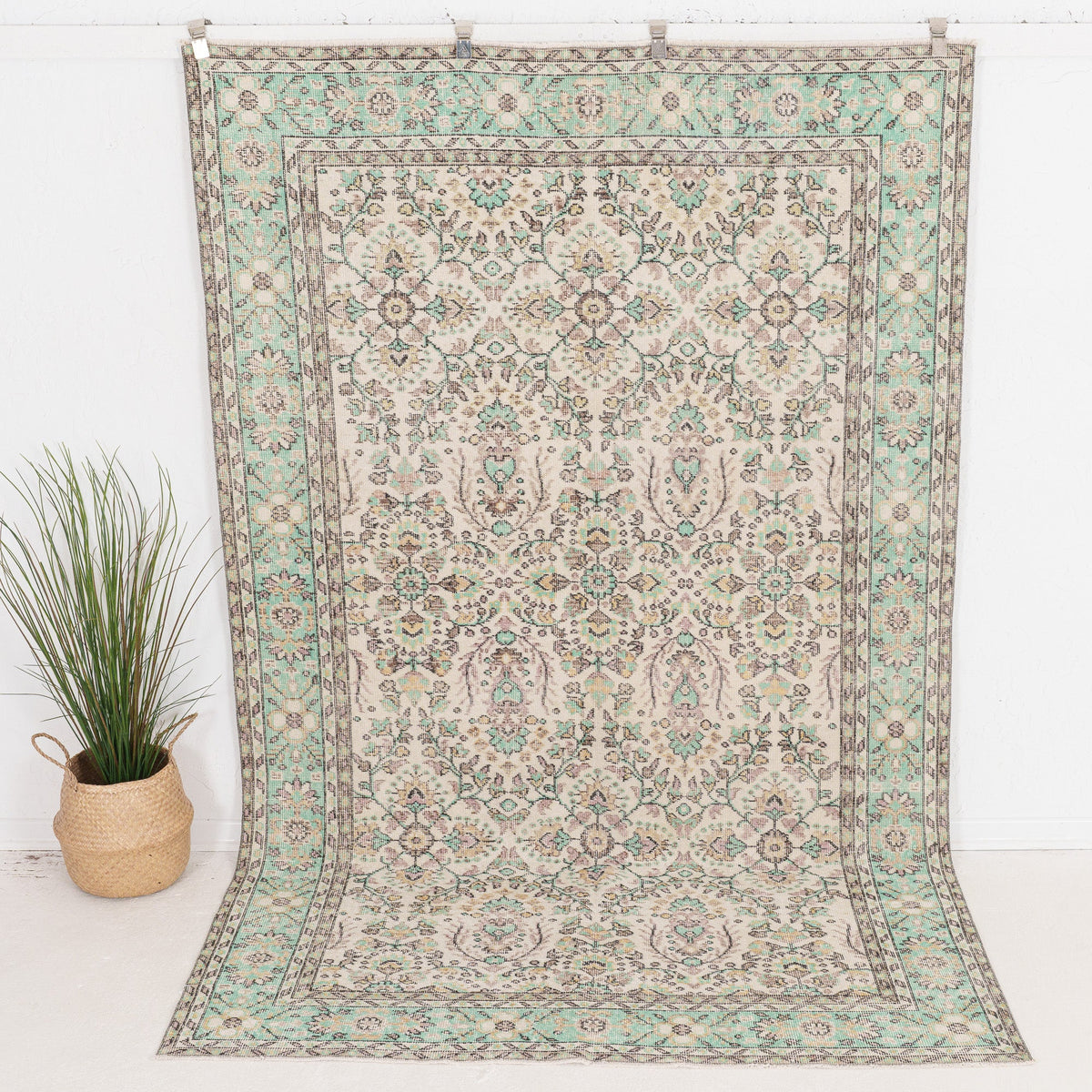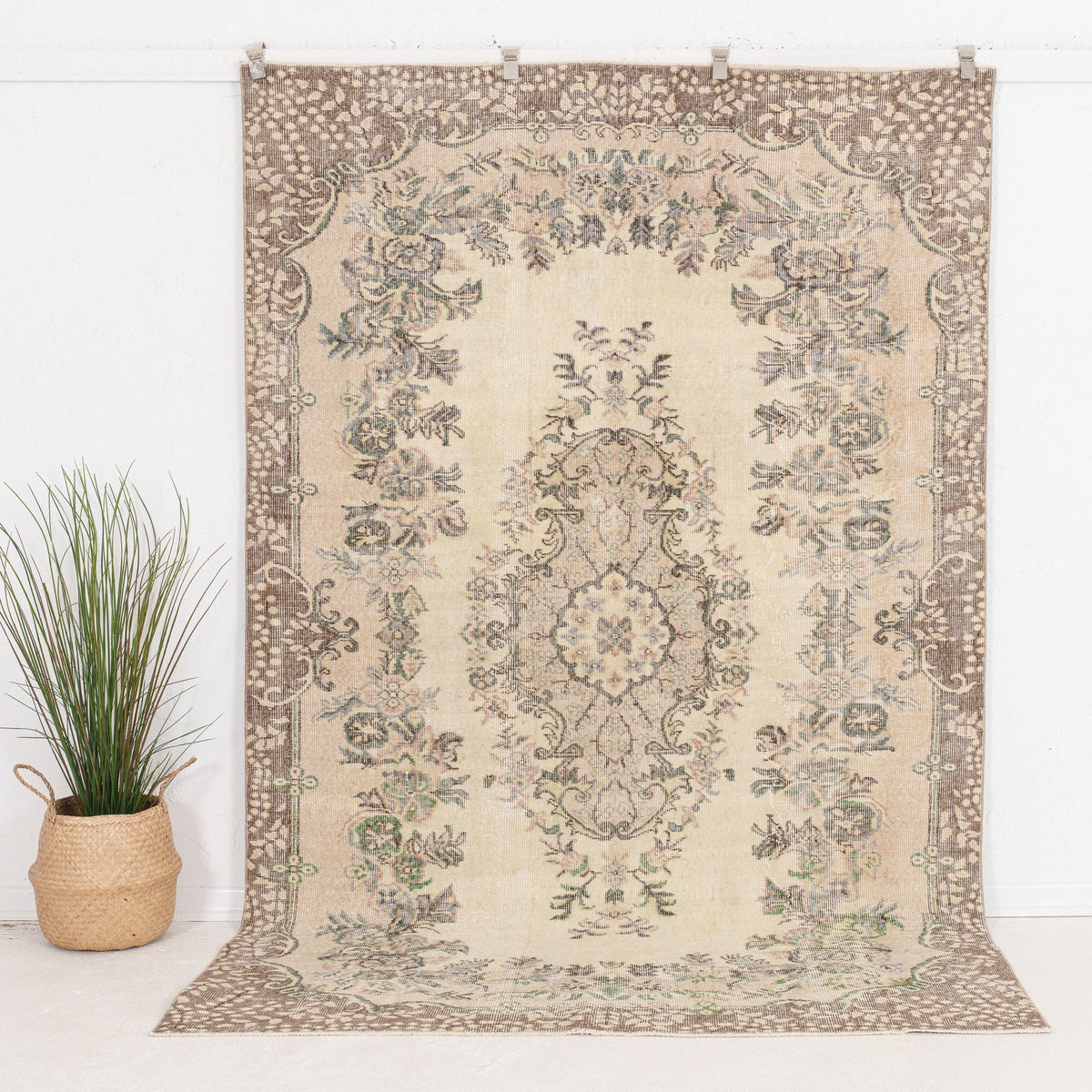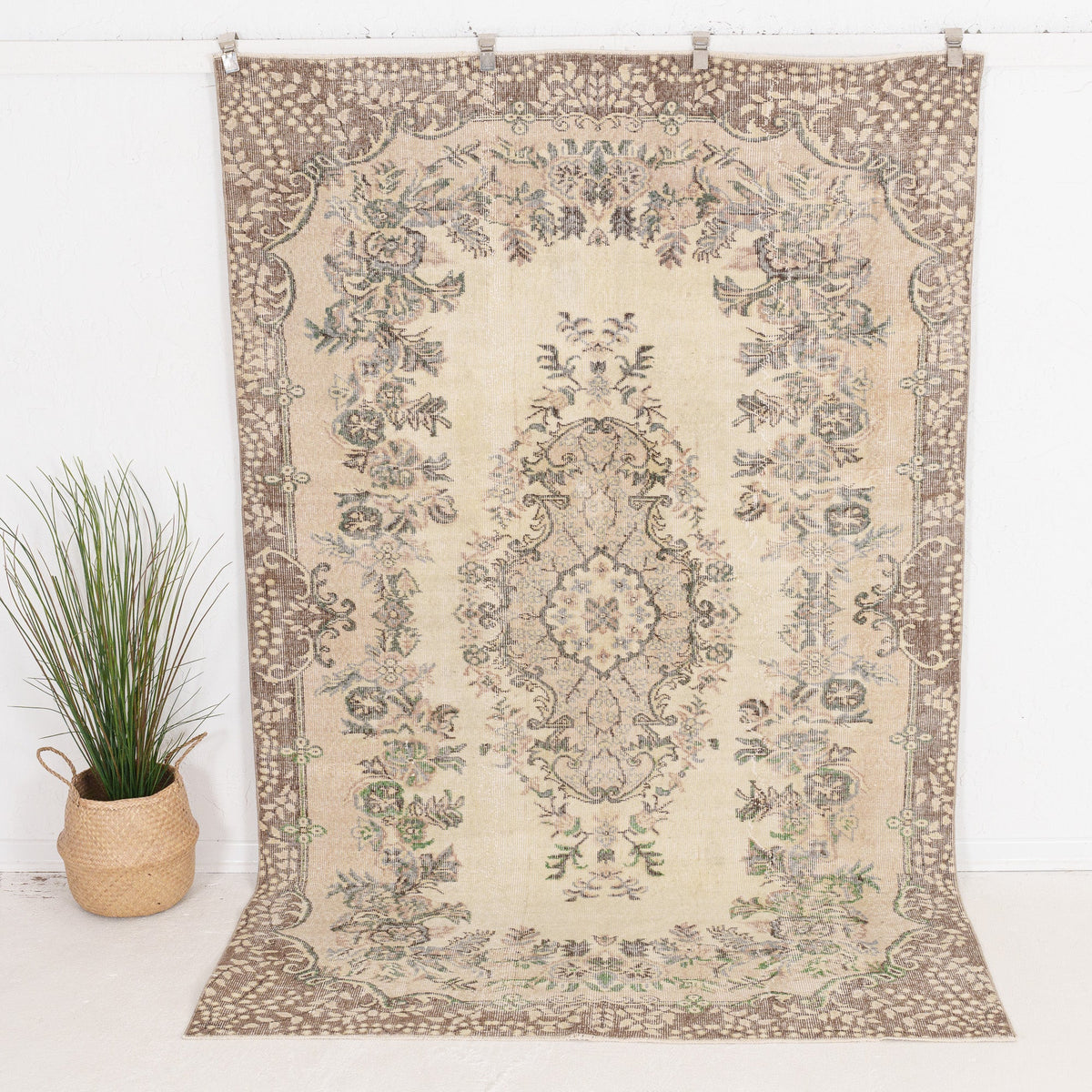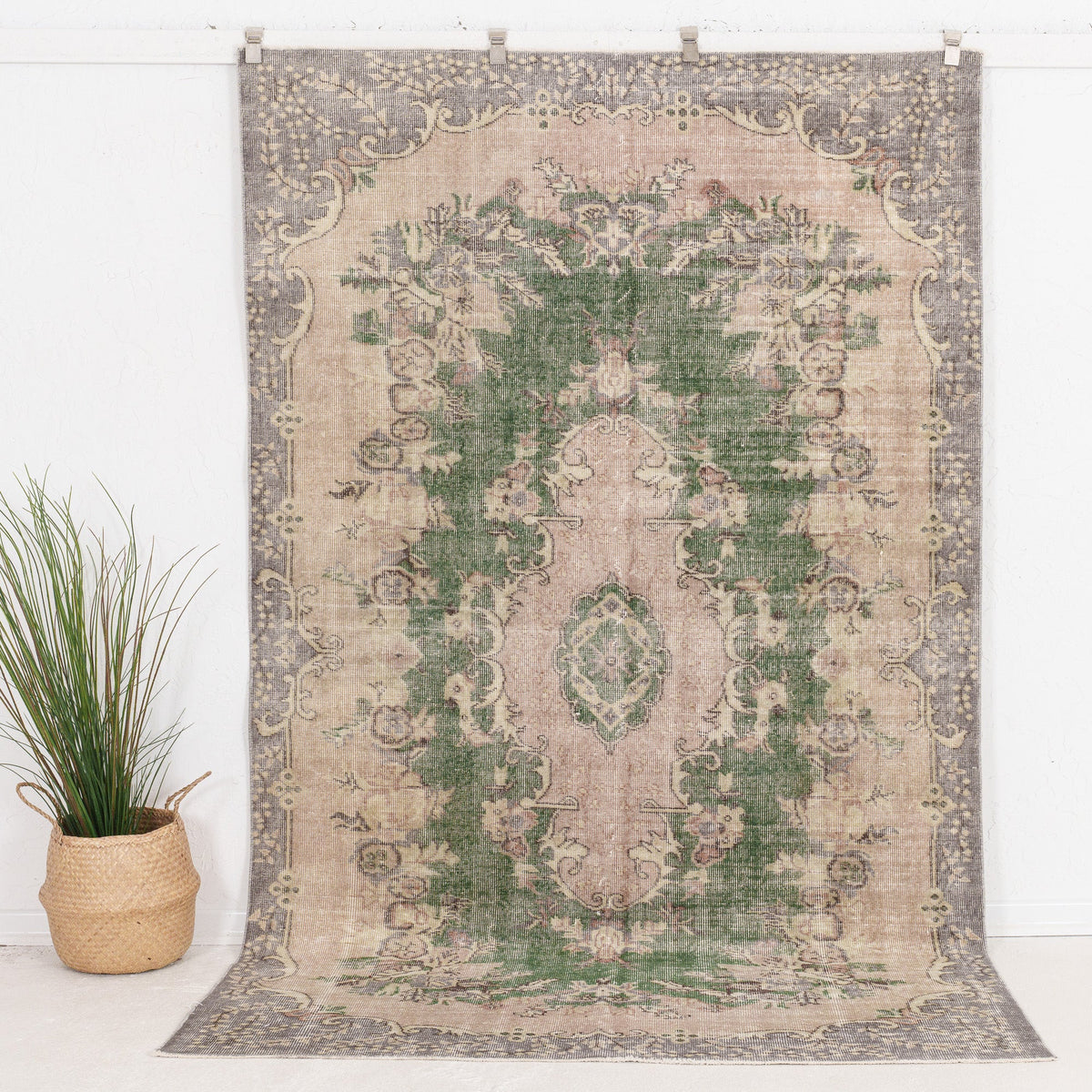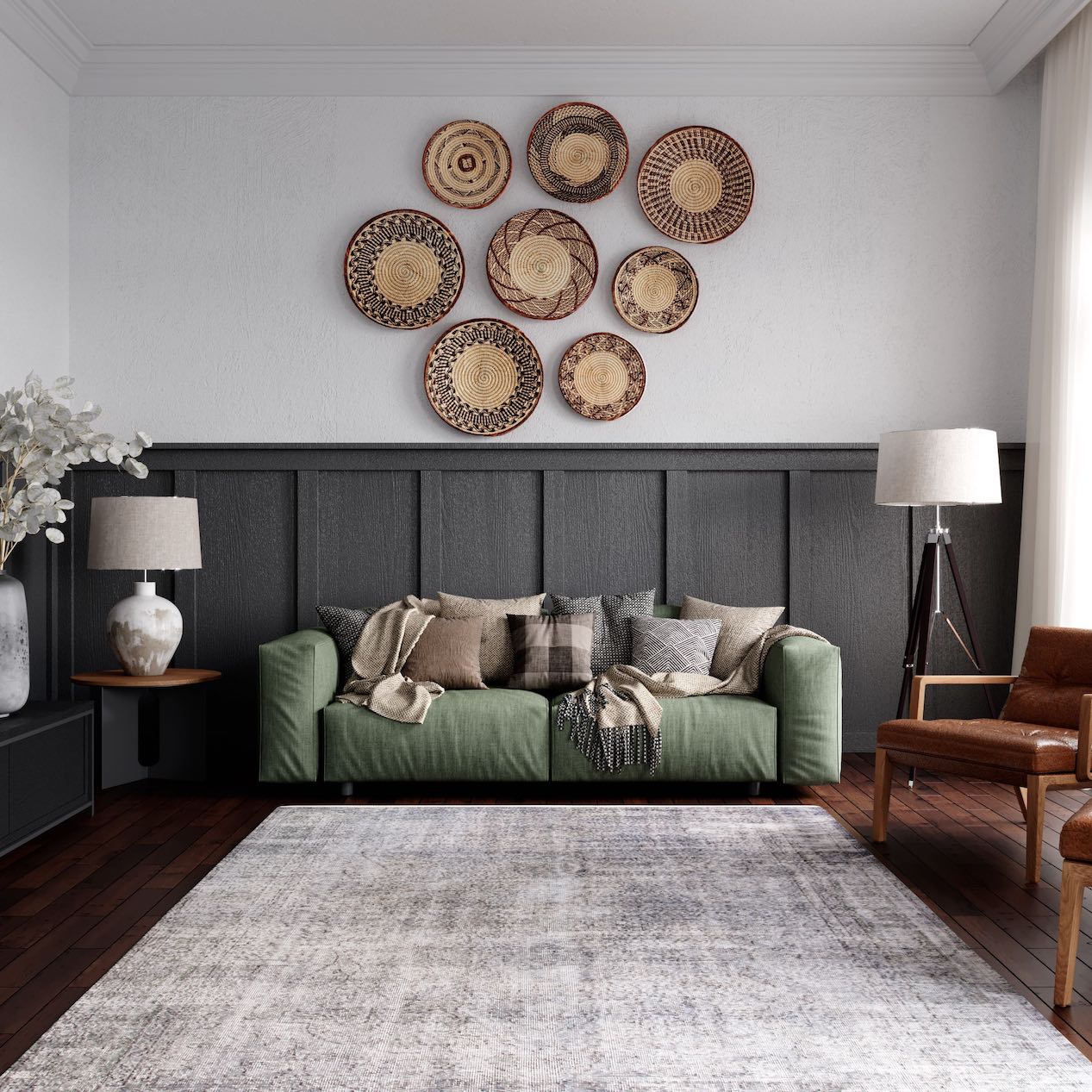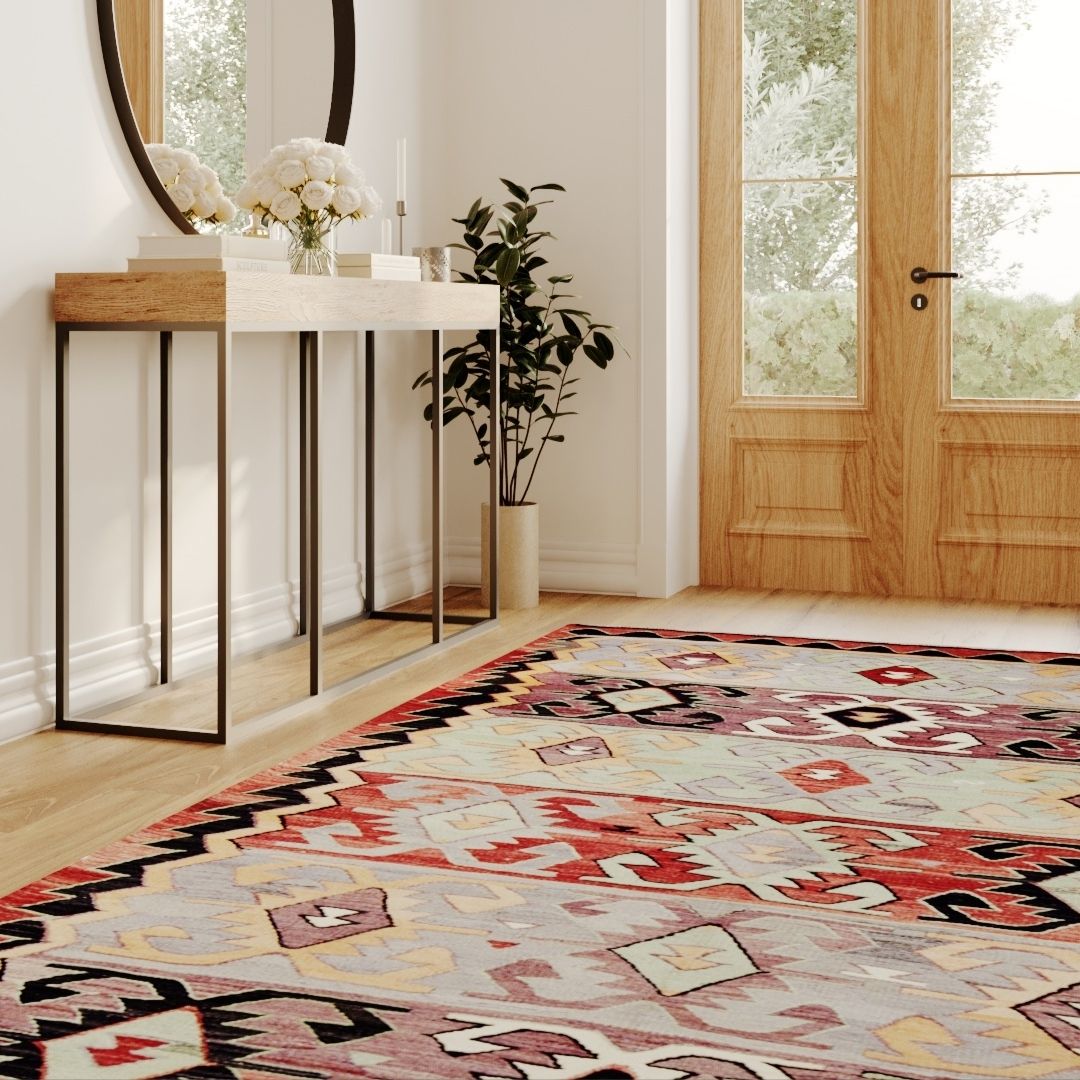Best Types of Antique Rugs
Antique rugs are one instance where life imitates art. The abstract design and expertly imbued story within each hand-woven carpet inspire you on the beauty of nature that you miss just with your naked eye. This is the aesthetic reason to own an antique rug, but there are also other reasons to own one. The reason such as an antique rug due to its manufacturing (mostly hand-woven carpets) tends to last generations. Such efficiently woven rugs almost always are environmentally conscious, with less demand on resources and more on the skill of the artisan who weaves it.
Owning antique rugs makes you a part of a weaving tradition and a patron of artisan's heritage. To put it simply, these categories of rugs bring more than decoration to your home. It makes your home host for the historical culture and tradition of rug making, embeds your environmental values, and serves as the heirloom to showcase your family legacy.

This article will explain explicitly everything you need to know about antique rugs before buying them, or if you already own one, this will make a good guide for you to understand the value and meaning behind your rug. Aside from learning the appraise, history, and meaning behind your rug, you will also learn about all the different types of antique rugs, their similarities and their differences. So without any further ado, let's unfold the magic carpet and check whether the carpet matches the drapes before flying away toward the hidden treasure.
History
Antique period carpets or its popular subcategory Antique Persian carpets are rugs that come out of the hand-weaving carpet looms of modern-day Iran. Therefore these rugs can also be called antique Iranian rugs. The Persian carpets (Iranian carpets) stand out of the geography of countries that manufacture the rugs. These countries are collectively called the countries of the rug belt. The rug belt stretches from Morocco beyond North Africa, the Middle East, and into northern India and Central Asia. But with their elaborative and complex design and variety, Persian carpets outshines the rest of the rugs from the rug belt. Considering the case that the rug belt is placed in the oriental region, the rugs that come from this region also have their name as oriental carpets.

Symbolism
In antique carpets, every shape, design, and color carries profound meaning. The patterns that are weaved into the oriental or the Persian designs of the carpets are called motifs. Each motif has its own connotation that makes them very personal for both the artisan and the owner. The placement of the motifs will often have a say over the type of motifs utilized. However, it is possible for a Persian carpet to have more than one motif.
Beliefs
The first dated mention of Persian or Oriental carpets came in the writing of Xenophon ( a Greek author). Xenophon mentions the carpets in his allusion to Timaison, where he goes on to describe them as the finest carpets that are great in value more than what the eyes see. Also, in his book Anabasis, he pointed out that these carpets make a diplomatic gift. This does not just end with Xenophon. The Persian carpets developed a reputation of having religious quality over the years. It is believed that the symbolic motifs and geometric forms protect their owner from evil and bad luck.
Types of Antique Rugs
Anatolian Rug
Anatolian carpets get their name from the Anatolian peninsula of Turkey, from where these carpets are made. Turkish people during the nineteenth century and well into the twentieth century inhabited the mountains (primarily). This made them segregated into groups that vary in color, artistry, and tradition. And these elements were also reflected in the rugs and carpets they made. The Anatolian carpet incorporated prominent usage of vivid and natural dyeing, motivated by elementals.

The Anatolian carpets, in turn, have their subtypes because of the nineteenth-century tribal segregation as mentioned above.
1. Ladik carpets are carpets with a bright natural color of rose and burgundy (which are made of West Indies-imported Kerekes beetles). The designs are asymmetrical and highly sought after for prayers.
2. Turkish Yuruk is another prolific rug in and around the Anatolian region. These nomadic carpets have an idiosyncratic design and the loosely woven style of the nomadic people.
3. Turkish Milas rugs are carpets with strong geometric designs and mild color tones. These rugs are clearly rendered and much more refined than their contemporaries.
Tehran Rug
If there is one style that is respected over all the other Persian styles of carpeting, it is the Tehran rug style. This is the carpeting style that every carpet connoisseur would recommend. This is because Tehran carpets infuse highly elegant craftsmanship with pictorial and botanical designs. However, these rugs are harder to find in the market due to the low-scale production. Most of the existing Tehran carpets are under private owners. So, it is less likely to come across these carpets without a very deep connection to the carpet collectors. Examples from the 19th century are crafted to the bones. Even the minute details in the designs are very apparent and exotic. This justifies why they are preferred more by collectors and connoisseurs.
Tabriz Rug
Tabriz carpets are a very old style of carpeting that had its origin in the city it was named after. Tabriz is a city located on the northwest border of Turkey where Shah Abbas, the chief monarch of the Safavid dynasty, resided. But when he moved his capital from Tabriz to central Persia, it started a series of chain reactions that brought dignity to the fine art of carpet weaving. During the fifteenth century and 16th century, this style of carpets inspired Persian artisans to a great degree and reinvented the Tabriz carpet production. Two of the characters that existed from the very nascent stage in Tabriz were the floral display and the densely knotted structure. Similar to its coeval carpets like Isfahan and Kashan carpets, Tabriz style carpets also capture the sophistication of classical Safavid court rugs.
Sultanabad Rug
Sultanabad carpets have good name recognition among the normal people who are not any big antique carpet experts. This is because of the fondness that is shown to them by the interior designers and connoisseurs alike. However, these 19th century carpets are hard to find in the international market. The best Sultanabad carpets are often a unique variety of classical Persian allover designs. The designs include Mina Khani (continual circular flower head), Herati ( continual diamond and curling leaf), and Harshang (dramatic dragon and blossom). The colors of the carpets used are of earthly tones or subtle glowing pastels. Ivory Sultanabad rug is an even more special kind of Sultanabad carpet style made out of undyed wool of the sheep in the color of Ivory (hence the name).

Kashan Rug
Kashan carpets were a carpet style that rose to prominence in the golden age of carpet weaving, i.e., full of 16th century and early part of 17th century under the watchful eyes of Shah Abbas, the principal sovereign of the Persian empire. Despite losing steam in the 18th century, the production picked back up at the end of the nineteenth century. This carpet style is also weaved to capture the sophistication of classical Safavid court rugs. One of the notable motifs that reappear in Kashan carpets is the imagery of "Royal Garden" built by Shah Abbas. Even among Kashan carpets, there exists an elite group of carpets called Mohtasham Kashan. These carpets utilize nontraditional color palettes and designs. Further, they are finely knotted with graceful but complex designs. The row of jufti knots, be it a symmetric knot or asymmetric knots, are very clear.
Isfahan Rug
Much like Kashan and Tabriz rugs, the Isfahan rug also belongs to the golden age of carpet weaving under Shah Abbas and thereby captures the sophistication of classical Safavid court rugs. Weavers and artisans of these carpets were inspired by bookbinding, calligraphy, and mosaic work. Since then, motifs such as scroll, vase, floral forms, vine interlacement, arabesque, and curvilinear have been part of the carpet designs. Only the finest of materials are used for producing the carpets. Lamb's wool (also called Kerke), silk, etc., are some of the high-quality materials used back then. Even today, such materials are identified with Isfahan rugs. When it comes to coloring these carpets, a natural dyeing of jewel-tone or similar soft pastel tones is used. Isfahan rug makes a brilliant carpet for decorative objectives with light tones and intricate designs.
Serapi Rugs
Serapi rugs are 19th-century rugs that fall on the trend of extremely impressive carpet while being frustratingly hard to find. These 19th-century rugs have a large area to reside in spacious designs. Despite being grand, Serapi is arguably one of the hardest rugs to find among the Heriz region style due to Northwest Persia's remote location of the mountains. The designs of these carpets are geometric designs with bold in characteristic. It is a very logical assumption to guess Serapi as an influence of the west bringing in balance and central medallion structure. The elaborate colours are inspired by nature which evokes utmost awe. At times, these hand-woven carpets are woven by artisans with decades of experience holding allover design. Only in the 1980s did Serapi break free of its tag as an inexpensive alternative to rugs of floral design.
Heriz Rugs
Heriz rugs are the main style among the wide range of carpets found in Northwest Persia, in the Heriz region, fifty miles east of Tabriz. The main feature of these rugs is their warm color palette and large-scale motifs. These carpets are true antiques, which are a testament to the art of carpet weaving. Because of the increasing demand for Heriz over the last decade, at present, there is only a scarce amount in the market for purchase. The medallion of diamond in the square is some of the esteemed motifs that had their origin in Heriz during the nineteenth century. These high-quality antique rugs were adopted by the village artisan who was competent in angular and spontaneous weaving. The appeal of Heriz is its color and design. Their trademark large medallion with corner pieces made of motifs like foliage and angular oak leaves are very captivating, to say the least. The dyeing process of the Heriz rugs is authentically done with pure vegetable dyes.

Heriz rugs also have a remarkable reputation of strength. This is true because of the double or triple outline, and so the carpets are strong and sturdy compared to the other rugs. Another feature that adds strength to Heriz is the geometrical designs. The versatility of this carpet allows the geometrical designs to be figured in, thereby increasing the strength in design.
Laver Kirman rugs
Kirman in central Persia has become a very important spot for the craft of carpet weaving since antiquity. It was a part of the royal patronage of the Safavid dynasty for at least four hundred years. Antique Persian Kerman carpet is as respected by the collectors and connoisseurs as Kashan and Tabriz. These are the first few styles of carpets that found their way to the European market. The reason for its success was the transcendental quality it possessed. During the nineteenth century, an important turn of events happened that altered the destiny of Kirman rugs. The civil strife that was at the boiling point at that period of time resulted in the burndown of Kirman. Persian carpets were not reflected in European paintings before the 17th century.
Fortunately, artisans who survived the fire escaped to the neighboring village of Laver, which is located on the north side of Kirman. Once there, they reset their craft of carpet weaving. The Laver Kirman pieces are created using high-quality wool of silk cascading on the cotton foundation. These carpets homed intricate designs without losing their grip on the subtlety of the antique Persian Kerman Carpet. It can be seen as fluid and lyrical with motifs of florals with infinite composition. Allover design of botanical essence, central medallion, and encircling foliage are some of the other noticeable features of Laver Kirman rugs.
Afshar Rugs
Afshar rugs are high-quality antique rugs made by Afshar nomads, who were a preeminent Persian tribe. These nineteenth-century carpets have very high public opinion in regards to their high-quality wool and efficient craftsmanship. The most prolific design feature of the Afshar can be noted as three. These are boteh (a Persian motif of almond or pine cone), central and corner medallion, and a vertical axis that cuts over the medallions. Afshar is said to have the first carpet to use boteh in their finished carpet. However, the most exciting, elaborate design that was put on the Afshar was from China. It was the motif of the dragon and phoenix. The inception of this design can be dated back to 5000 years. Other designs that favor the personal taste of many people are tulips, tree of life, etc. Villagers who made these rugs used rich lanolin wool taken from their own flocks as the carpet wool. Also, the colors used in the finished carpet are deeply saturated and complement the elaborate design of the carpet. Much like many antique Persian rugs of the nineteenth century, Afshars are hand-woven carpets and not machine made rugs.

Popular Questions About Antique Rugs
How much is a used Persian rug worth?
You can get a gorgeous-looking rug for just around $1600 to $1700. The rugs that you get at this price range last forever. However, an authentic Persian rug of the same size, i.e., 2-by-3 foot, might need a little more investment. An Iran-made Persian rug will cost you around $15000. Also, the condition and the craftsmanship of the rug come into play in deciding the price tag. In such a case, if the condition of the carpet wool, the craftsmanship, and the knot count is above average, the price can go up to $20000.
Judging the price of rugs that are older than seventy-five years is even more difficult than the ones below them. It's important to ask yourself "How can I estimate the worth of an antique rug?" This is because when such rugs are brought into value evaluation, more than the craftsmanship of the entire weaving process and the quality of the wool and knot density come into play. In these instances, you need to take into consideration the time when the rug is made; whether it is the 18th century, 17th century, or thirteenth century, the price varies depending on the time period it was made as it holds more than wool and design in them, they hold history.
To understand the age of the rug is to look into the background of the rug. No rug made back in time will have a green background. Rugs with a green background are only seen in the modern production of export rugs. Green was never used in antique rugs because green had religious value. Antique rugs will have a red or dark blue colours in the background. To put it simply, hand-woven carpets of years passed, such as the period carpets of the thirteenth-century worth more than the contemporary ones. It is wise to take note that antique rugs in the ECarpet gallery are sold in the price range of $100,000. So, collectors of antique rugs invest in them as investors invest in stocks.

How old are antique Persian rugs?
For a Persian rug to be considered antique, it should be at least 80 years old. Even rugs older as far as seventy-five years are now being considered as antique Persian rugs by some connoisseurs and interior designers. At the same time, the period carpets that belong to far bygone centuries like the fifteenth century, thirteenth century, etc., are regarded with utmost esteem within the groups of collectors and connoisseurs. The entire weaving process of the Sasanian Empire and Timurid empire is in the upper echelon of the totem pole.
Traps in identifying genuine Persian rugs
One of the biggest and most common traps in identifying the authenticity of Persian rugs is to confuse hand-woven carpets with machine-made ones. The machine made carpets are of modern production and have synthetic colour variations and fibers. These carpets are of much lower quality and variety; it only takes just about two-three hours to make one of these industrially manufactured carpets. In comparison, the antique Persian rugs are knotted by hand and take months to reach the final product. Ecarpet gallery popped up in recent years to give collectors and regular people access to buy and sell their antique Persian rugs, among other rugs. So, it is shrewd to make the purchase only after being confident with the middleman. Another important thing to keep in mind is that the rugs belonging to empires such as the Safavid empire, Sasanian empire, and Timurid empire have their own unique designs, colors, and craftsmanship. For example, in the rugs of the Sasanian empire, artisans weaved the rugs in asymmetrical knots. So, one should always be aware of these characteristics before investing in any of the antique rugs.
More than the appearance
As mentioned above, an antique Persian rug is more than the quality of the wool it is made out of, and the same is the case with the designs. Even the craftsmanship of rugs is one of the considerations of the carpet worth but not the consideration. The time or era the rug belonged to is very important. A Persian rug to be considered antique, it should be around eighty years old. In other words, an antique Persian rug packs more than aesthetics in them, they carry history. Such antique rugs are worth more than the rugs that are finely crafted. The rugs such as Mohtashem Kashan rugs, Kerman carpets, and formal Garden design carpets are considered the best styles of Persian rugs among all other rugs.
Antique rugs can add a touch of luxury and sophistication to any room in your house. Not only do they look great, but they also have a history and story behind them that you can share with your friends and family. If you’re looking for a way to update the look of your home, consider investing in an antique rug.

